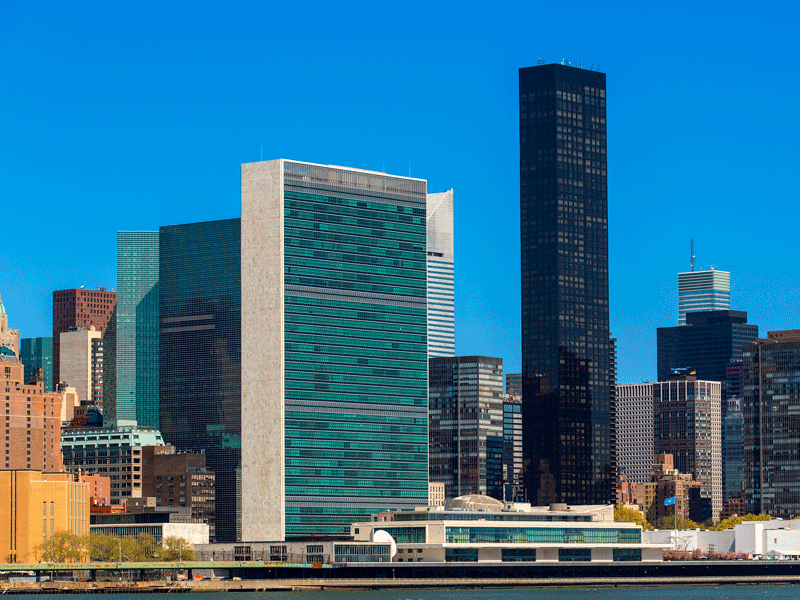
Top 5
For many wealthy individuals, their fortunes come with a great sense of personal responsibility – to the society in which they live, to the wider global financial ecosystem and to the legacy they wish to leave behind. Their investment decisions increasingly reflect a desire to deliver not only financial returns but also social benefits. As a result, there has been a growing interest in impact investing. At BNP Paribas Wealth Management, for instance, client assets allocated to these types of investments have grown tenfold in the past six years to reach €10bn ($12.3bn), according to an article published earlier this year in Professional Wealth Management.
In a highly globalised world, there is a greater common awareness of major societal and environmental issues
The case for impact investing is clear. First of all, investors live in the societies shaped by their investments, meaning environmentally and socially positive investing is inherently in their own interests. Second, over the long term, economies can only thrive if the wider society does well.
In a highly globalised world, there is a greater common awareness of major societal and environmental issues, such as income inequality and climate change. Clear objectives have been set to address these issues, but substantial investments are needed. For instance, the UN estimates that the cost required to meet its Sustainable Development Goals will be somewhere between $50trn and $70trn, while the cost to meet the goals set out by the 2016 Paris climate accord will require more than $12trn over 25 years.
A developing trend
Shifting demographics among the world’s high-net-worth individuals, families and institutions are cause for optimism that these global social and environmental goals can be met. According to surveys carried out last year by UBS and OppenheimerFunds in association with Campden Wealth, approximately 70 percent of ultra-high-net-worth (UHNW) Millennials, 88 percent of UHNW women and 40 percent of family offices want to make investment decisions that align with their social values.
$50trn-70trn
Estimated cost of the UN’s Sustainable Development Goals
$12trn
Estimated cost of the 2016 Paris climate accord’s goals
$40trn
Estimated transfer of wealth to women and Millennials by 2050
With $40trn in wealth expected to be transferred over the next 30 years to women and Millennials in the US alone, according to a 2018 trends report by the Centre for Financial Inclusion, we are likely to continue to see an increase in the private capital allocated to impact investments.
While sustainability and alternative investments had previously just been niche strategies within a broader portfolio, they now represent a much larger and increasing portion of many investment strategies. In fact, some investment management firms concentrate exclusively on sustainable investments, such as London-headquartered Generation Investment Management, which promotes ‘sustainable capitalism’. Launched 14 years ago, the firm now has over $18.5bn of assets under management and runs one of the top performing global equity funds in the world across all indices – not just those focused on sustainability.
Growing demand for impact investment opportunities has also led to the launch of a number of initiatives among the leading players in the global financial services community. UBS is working with partners outside the industry – such as the Word Bank and the World Economic Forum – to develop an open architecture platform to facilitate sustainable investments. Last year, Credit Suisse launched an impact advisory and finance department to drive its sustainability agenda. Industry leaders such as KKR, Bain and Goldman Sachs are among those in a rapidly expanding group of financial institutions raising capital for impact investments that meet environmental, social and governance (ESG) criteria.
The holistic approach
These initiatives are being echoed and encouraged by the work of regulators and activists around the world. The European Commission has set its intention to clarify institutional investors’ and asset managers’ “legal obligation to factor sustainability risks into capital allocation decisions”. Brazilian regulators, meanwhile, are reviewing a resolution that governs investment practices and disclosures by closed pension schemes to reinforce ESG integration needs. Furthermore, in Australia last summer, shareholders brought a lawsuit against the Commonwealth Bank of Australia over the nondisclosure of climate risks, forcing the bank to begin climate disclosure practices.
For corporations and investors alike, taking a holistic view of activities brings benefits. A 2015 review of more than 2,000 studies found that integrating sustainability measures improves, rather than impairs, operating performance. Although impact investing varies a great deal, research by the Global Impact Investing Network and consultancies, such as McKinsey, suggests that investors believe they are achieving annual returns of between five and 15 percent.
While pursuing stable returns in the current volatile environment, impact investing can provide the opportunity to further diversify investment portfolios and improve yields over the longer term, while bringing positive social and economic benefits to the wider society. Indeed, in their search for improved performance to support wealth and succession planning – taking into account international family circumstances, geographical footprint and lifestyles – investors will continue to take a greater interest in them.


